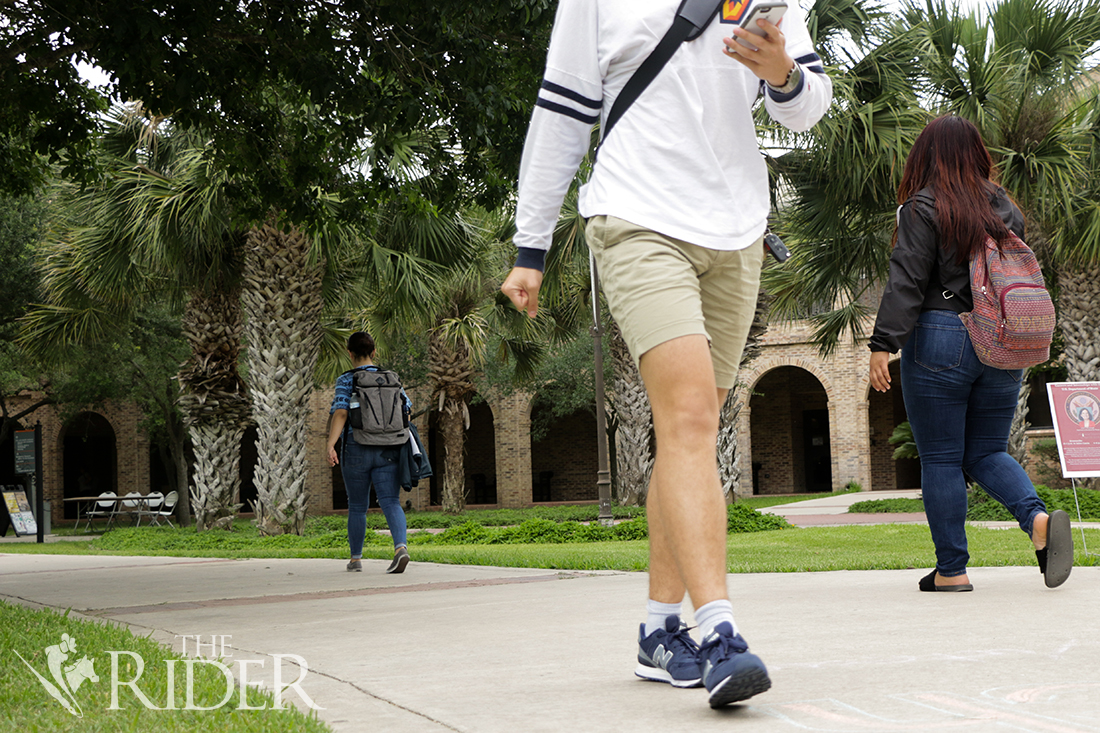
After months of deliberation regarding a DREAM center at UTRGV, the Student Government Association has passed a resolution that would help bring the request to fruition.
The SGA approved a DREAM Center Resolution on April 6.
Last November, more than 200 students marched on the Edinburg campus, demanding a DREAM center at the university.
The DREAM Center Ad Hoc Committee met Feb. 20 to discuss the creation of a resolution to allocate funds for a center for undocumented students at UTRGV.
In spite of its passing, several authors of the resolution voiced their concerns about the way a university official described it.
In an interview with The Rider, Rebecca Gadson, associate vice president for Student Life and dean of students, addressed comments made by authors of the DREAM Center Resolution about the center being a multicultural center, which is not what they asked for.
“I don’t think I made that clear enough in my interview with the UTRGV-TV people because it kind of missed the fact that there is a center and there will be a DREAMer resource center, like, as part of that operation. So, I just want to clarify that because I, perhaps, don’t think I was clear enough.”
Gadson said she met with the SGA the following week after the resolution passed.
“When I met with the current elected executives of SGA, along with the president-elect and the elected officials for SGA, they relayed that their understanding was that moving towards a similar model to what is at our sister school UTSA was definitely something that would work as we move forward,” she said. “And that model is that there is a center, like an overarching center, and within that center, is a DREAMer resource center.”
Gadson submitted a request for funding to the Student Fee Advisory Committee in January.
“I did submit a request to the Student Fee Advisory Committee for financial support for personnel and resources for a center that would be an identifiable space for students,” she said. “Part of that was for a place where it could be free for students to explore the intersection of multidimensional aspects of their identity and contribute to the development and delivery of learning experiences, workshops and information.”
The SFAC has recommended the approval of $72,990.32 of the $93,740.32 requested.
“The recommendation would allow the hire of one full-time staff member to serve as the program coordinator and one graduate assistant,” Gadson said.
She said the request is pending final approval by UTRGV President Guy Bailey.
Denisce Palacios, SGA senator-at-large for Edinburg; Ivan Morado, senator for the College of Liberal Arts; Bianca Castro, president for the Young Democratic Socialists of America; Alejandro Sanchez, a member of La Union Chicanx Hijxs de Aztlán; and Aileen Garza, a member of the Texas Freedom Network/Texas Rising, are the authors of the DREAM Center Resolution.
The resolution calls for the establishment of “a center for undocumented students that provides resources and services tailored to the unique needs of our undocumented student population, such as but not limited to financial aid assistance, counseling services, post-graduation career advising, academic support and ombud services.”
Palacios, who now is president-elect of the SGA, said the DREAM Center Resolution is intended to provide resources for DACA recipients and/or undocumented students.
“We would like to see … a centralized place where students who are without legal status can get … resources in the form of advising or in the form of educational support,” Palacios said. “So, academic advising and mental counseling.”
The Deferred Action for Childhood Arrivals (DACA) program provides about 800,000 young people who were brought illegally to the United States as children with temporary protection from deportation if they can demonstrate that they meet several criteria, according to whitehouse.gov.
Palacios said the SGA will work with Gadson and other students “to have their input on how to proceed with this.”
Gadson said the number of undocumented students enrolled at UTRGV ranges from 800 to 900 students.
She said the idea is to have a physical DREAM center ready for Fall 2018.
“As we went through the process of requesting funding so that there could be additional support and personnel to serve that purpose, it was discussed about having an overarching center … that could also be a place and a home for other Texas resource centers to be found,” Gadson said. “I still need to work with other stakeholders on campus to get feedback but the idea or goal would be that there would be a physical center and that there would also be a DREAMer resource center that is part of the overall operation. So, the Student Fee Advisory Committee did vote to support funding.”
She explained that the fiscal year starts Sept. 1. Therefore, the financial support for a DREAM center can only be available after that date.
The Rider asked Palacios what would happen if Congress removed the DACA program.
“Well, that still means that we have an undocumented population,” she said. “It doesn’t mean that we stop serving our undocumented students and, ultimately, we want them to feel that whatever happens with [the] federal government that they have a place here because they are people and they are part of our community and they are part of our family.”
Similarly, Gadson replied, “I have been working in higher education prior to us having DACA as an option. I do think that regardless of whether or not DACA is able to continue, there is still a need to support students who are undocumented scholars because access to higher education is available. So, as long as there is the opportunity for students to attend, we should have services that support the different unique circumstances and backgrounds of all of our students.”
She said it is critical to inform students that higher education is accessible and an option.
“I think that what becomes very important is that there is an identifiable space for making it easier for students to connect to their available resources and services already offered at the university or within our community, with our community partners,” Gadson said. “Therefore, it could potentially help us to reach more students with questions or who have been going through some challenging situations and also helps us to have additional personnel to continue to expand the types of offerings that we have been doing at the institution. I think it helps a people have a sense of affirmation and belonging when they find that there is a place for them at the institution.”
Gadson said the Office of the Dean of Students will work on gathering more information about the students who will be served at the DREAM center.
“One thing that our office is doing is we work to employ a faculty fellow and we have developed a survey that we will be distributing later this month to our students on campus who are undocumented to get a little bit of more feedback about services, experiences, experiences at the university, within their community, to help inform us on additional services or things that we should offer.”
She said it is important to get feedback from the “population that will be served the most to help them make informed decisions.”
Palacios said she would also like to see some type of legal aid available at the DREAM center.
“We want to make sure that these people know that UTRGV is home,” she said. “So, we wanted to make sure that the UTRGV administration does the best job possible, so that they feel like they are part of our community.”
No official name for the DREAM center has been decided.
The Rider requested interviews with Castro and Sanchez several times but as of press time Thursday, they were unavailable.





